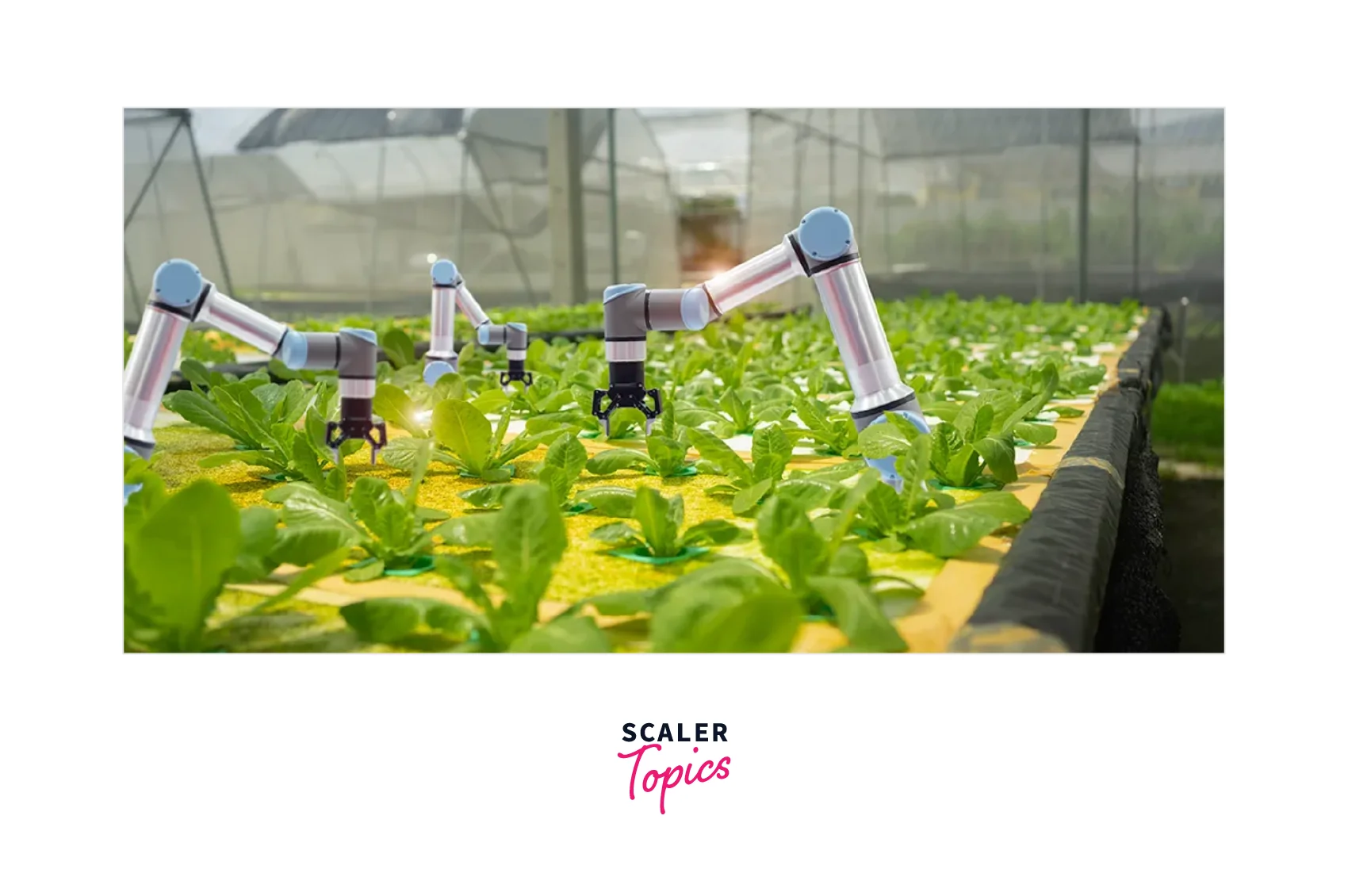AI and Climate Change
Overview
By maximizing energy consumption, forecasting weather patterns, and keeping track of environmental changes, artificial intelligence(AI) has the potential to contribute to the fight against climate change significantly. In addition, AI can help design sustainable and efficient supply chains, transportation networks, and cities. However, ethical issues such as avoiding escalating social injustices and minimizing the environmental impact of AI infrastructure must be weighed when implementing AI in climate change solutions. To combat climate change with artificial intelligence, AI can be a potent tool, but it must be used carefully and ethically.
Introduction
Climate change is one of the most pressing global issues of our time. It poses a significant threat to our environment, economy, and way of life. The temperature rise, melting of glaciers, and changing weather patterns are all alarming signs of the impact of climate change. Artificial intelligence (AI) in combating climate change has emerged as a promising solution. AI has the potential to help in predicting and mitigating the impact of climate change, making it a crucial technology to adopt.
How can AI Help in Fighting Climate Change?
AI has the potential to help us understand climate patterns, predict future events, and inform decision-making. As a result, AI can play a crucial role in reducing greenhouse gas emissions, increasing energy efficiency, and improving the management of natural resources. Here are some ways AI can help in fighting climate change:
- Predicting climate patterns: AI can analyze large datasets and identify patterns in climate data. This can help us predict future weather patterns and prepare for natural disasters.
- Energy efficiency: AI can optimize energy consumption by identifying inefficiencies and recommending improvements. For example, smart homes can use AI to learn about residents' energy usage patterns and adjust heating and cooling accordingly, reducing energy consumption.
- Resource management: AI can help us manage natural resources like water, forests, and land. For example, precision agriculture uses AI to optimize crop yields and reduce water usage.
- Clean energy: AI can help us optimize using clean energy sources like solar and wind power. For example, AI can predict when solar panels produce the most energy and adjust energy consumption accordingly.
Framework to Tackle Climate Change Using AI
A framework developed by Forbes explains how AI can be used to combat climate change. It includes the following steps:
- Data collection: Collect large datasets on climate patterns, energy consumption, and natural resource management.
- Data analysis: Using AI to analyze the collected data and identify patterns and inefficiencies.
- Recommendations: Recommend ways to improve energy efficiency, resource management, and reduce greenhouse gas emissions.
- Implementation: Implementing the recommendations and continuously monitoring their impact.
Organizations can use AI to tackle climate change by following this framework. It can help governments and businesses make informed decisions and take action to reduce their carbon footprint. Additionally, it can help individuals make small changes in their daily lives to reduce their impact on the environment.
Innovations Helping Fight Climate Change Using AI
Artificial intelligence (AI) has the potential to be a game-changer in the fight against climate change. AI can help us predict and mitigate the effects of climate change and improve our resource management. In this article, we will look at some of the most promising innovations in AI that are helping combat climate change.
Climate Modeling and Prediction
AI can be used to predict the effects of climate change and improve our understanding of how the climate system works. This can help us make better decisions about mitigating climate change and adapting to its effects. For example, the UK Met Office uses AI to analyze climate data and create more accurate weather forecasts. The forecasts help people prepare for extreme weather events and help emergency services respond to disasters more effectively.
Renewable Energy Optimization
Renewable energy sources like solar and wind power are critical in reducing greenhouse gas emissions. However, they are intermittent, and their output could be better predicted. AI can help optimize renewable energy sources by predicting when they will produce the most energy. For example, Google uses AI to predict the output of its wind farms and solar plants and adjusts its energy consumption accordingly. This helps Google reduce its carbon footprint while maintaining a stable energy supply.
Precision Agriculture

Agriculture is a significant contributor to greenhouse gas emissions. AI can help optimize crop yields and reduce water usage, helping reduce the impact of agriculture on the environment. For example, John Deere's AI-powered precision agriculture system uses sensors and machine learning algorithms to optimize crop yields. As a result, the system reduces water and fertilizer usage, increases crop yields, and reduces the environmental impact of agriculture.
Forest Management
Forests are crucial in mitigating climate change by absorbing atmospheric carbon dioxide. AI can help us manage forests better by monitoring their health and identifying areas that need attention. For example, Microsoft's AI for Earth program uses AI to analyze satellite images and track changes in forests' health. This helps conservationists and governments identify areas that need protection and take action to prevent deforestation.
Carbon Capture and Storage
Carbon capture and storage (CCS) is a promising technology that can help reduce greenhouse gas emissions from industries like power plants and cement factories. AI can help optimize CCS systems by predicting how much carbon dioxide will be captured and stored. Carbon Clean Solutions uses AI to optimize its CCS technology, reducing the cost of capturing and storing carbon dioxide.
Smart Transportation

Transportation is a significant contributor to greenhouse gas emissions. AI can help optimize transportation systems by predicting traffic patterns and optimizing routes. For example, Uber uses AI to optimize its ride-sharing service, reducing the number of cars on the road and reducing emissions. Additionally, autonomous vehicles can be more fuel-efficient, further reducing emissions.
Ocean Monitoring
The ocean plays a crucial role in regulating the earth's climate. However, it is also affected by climate change, which can have far-reaching consequences. AI can help monitor and manage the oceans by analyzing satellite data and other sources. For example, Saildrone uses AI-powered ocean monitoring drones to collect ocean currents, temperature, and acidity data. The data helps scientists better understand how the oceans are changing and what impact they could have on the environment.
Real-life Examples and Use Cases
The above innovations are not just theoretical; they have been implemented in real-life scenarios with tangible results. For example:
- Google's use of AI to optimize renewable energy has helped it reduce its carbon footprint by 40%.
- John Deere's precision agriculture system has helped farmers increase crop yields by 10% while reducing water usage by 15%.
- Carbon Clean Solutions' use of AI has helped reduce the cost of CCS by up to 30%.
- The UK Met Office uses AI to analyze climate data and create more accurate weather forecasts, helping people prepare for extreme weather events and emergency services respond to disasters more effectively.
- Microsoft's AI for Earth program uses AI to analyze satellite images and track changes in forests' health, helping conservationists and governments identify areas that need protection and take action to prevent deforestation.
- Saildrone uses AI-powered ocean monitoring drones to collect data on ocean currents, temperature, and acidity, helping scientists better understand how the oceans are changing and what impact they could have on the environment.
- Uber uses AI to optimize its ride-sharing service, reducing the number of cars on the road and reducing emissions.
These real-life use cases demonstrate how AI can tackle different aspects of climate change and help mitigate its effects.
Conclusion
- AI can play a crucial role in the fight against climate change by enabling more efficient and effective ways to monitor, predict, and mitigate the impact of human activities on the environment.
- AI can help optimize energy usage, reduce waste, and increase the use of renewable energy sources, thereby reducing carbon emissions.
- AI can create more accurate weather forecasts, helping people prepare for extreme weather events and enabling emergency services to respond more effectively to disasters.
- AI can help conserve and protect natural resources by monitoring forests and oceans, identifying areas that need protection, and detecting and preventing illegal activities like deforestation and overfishing.
- Real-life use cases of AI in fighting climate change show that the technology is already making a positive impact and that there is potential for an even greater impact in the future.
- Collaboration between governments, industry, and academia is necessary to leverage AI's full potential in the fight against climate change.
- Despite the potential benefits of AI, it is important to ensure that its development and use are ethical and do not harm the environment or society.
